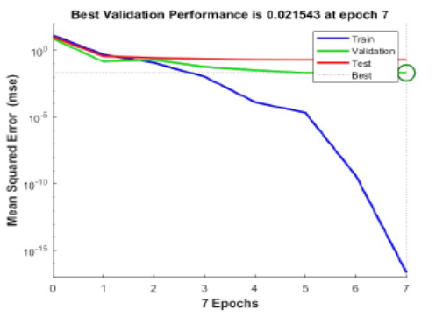


Indian Journal of Science and Technology
DOI: 10.17485/IJST/v16i34.1589
Year: 2023, Volume: 16, Issue: 34, Pages: 2778-2788
Original Article
Alka Chopra1, T K Jain2, Nishant Saxena3, Amit Tiwari4*
1Ph.D Scholar, Department of Management, Suresh Gyan Vihar University, Jaipur, 302017, Rajasthan, India
2Professor, Department of Management, Suresh Gyan Vihar University, Jaipur, 302017, Rajasthan, India
3Assistant Professor, Department of Electrical Engineering, Suresh Gyan Vihar University, Jaipur, 302017, Rajasthan, India
4Assistant Professor, Department of Mechanical Engineering, Suresh Gyan Vihar University, Jaipur, 302017, Rajasthan, India
*Corresponding Author
Email: [email protected]
Received Date:26 June 2023, Accepted Date:22 August 2023, Published Date:15 September 2023
Objective: To evaluate the capacity of artificial neural network modeling in quantification of relative contribution of various factors towards happiness index of university faculty members and to adjudge the degree of agreement with the results of descriptive statistical analysis under hard societal situation. Methods: A relational-research is conducted by descriptive statistics and ANN modeling with 93 variables, grouped into 24 major variables. The primary data are obtained through surveying after random convenient sampling with self-administered questionnaire based on five-point Likert scale. The study is conducted on 350 faculty members; 273 duly filled in questionnaires are received. The data stemming from varying perceptions of teachers is highly nonlinear. ANN is chosen for its capability to capture high nonlinearity; a gold standard method of comparison with learning tools like multiple regression or logistic regression reveals it superiority; sample size driven predictive uncertainty makes machine learning unsuitable. Findings: ANN modeling shows that the independent variable ‘salary’ has 46% negative weightage on attainment of happiness whereas, the given working condition related factors record a 45-48% weightage. Descriptive statistics corroborate ANN result, showing that salary, job satisfaction and work environment cause dissatisfaction by recording poor happiness index ~ 65%. Novelty: The novelty lies in implementation of ANN modeling on community survey generated data for identification of significant affecting happiness of faculty members. Consideration of 93 influencing factors grouped into 24 input variable and to examine if ANN prediction corroborates statistical test of significance adds credence to the novelty of the present approach hitherto unreported.
Keywords: Happiness index; Artificial Neural Network; descriptive statistics; Training; student’s ttest; Job satisfaction
© 2023 Chopra et al. This is an open-access article distributed under the terms of the Creative Commons Attribution License, which permits unrestricted use, distribution, and reproduction in any medium, provided the original author and source are credited. Published By Indian Society for Education and Environment (iSee)
Subscribe now for latest articles and news.